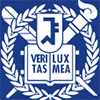Seoul National University, also known as National Seoul University, is under the jurisdiction of the Ministry of Education of South Korea. It is the first national comprehensive university established in South Korea. In the 2025QS World University Rankings, Seoul University ranks 31st. The predecessor of the school was Seoul Normal University, which was founded in 1895. On October 15, 1946, National Seoul University was established. Its historical evolution is as follows: In 1895, the Judge Training Institute (Law School) and Seoul Normal School (Normal University) were established; in 1899, the Medical School (Medical School) was established; in 1901, the Ministry of Education of Korea Hospital established a new Department of Obstetrics and Gynecology Nursing (Nursing School); in 1904, the Agricultural, Commercial and Industrial School (Agricultural Life Science College) was established. In 1946, National Seoul University was established, with 9 universities including the College of Arts and Sciences, the College of Science and Technology, the Agricultural University, the Law School, the Normal University, the Business University, the Art College, the Medical School, and the Dental University, and 1 graduate school. In 1951, due to the outbreak of the Korean War, the school moved to Busan and arranged a "Wartime Joint University" operation course. On April 20, 1953, the School of Arts was divided into the School of Arts and the School of Music; on September 18 of the same year, the school headquarters and the College of Arts and Sciences returned to Seoul to operate. From 1954 to 1962, the school implemented the University of Minnesota reconstruction project and arranged 218 professors to study in the United States. Among them, on January 13, 1959, 10 new departments were established, including the Department of Diplomacy, the Department of Traditional Chinese Music, the Department of Nursing, and the Department of Trade. From 1961 to 1973, in order to emphasize the training of professional talents, several professional graduate schools were established and expanded, including the Independent Management Graduate School (1961-), the Judicial Graduate School (1962-1971), the Education College (1963-1975), the Business School (1965-1975), the Newspaper Graduate School (1967-1975), and the Environmental Graduate School (1973-). On March 21, 1970, a 1 million pyeong area in the northwest of Gwanak Mountain was selected as the comprehensive relocation site for the campus; on April 2, 1971, the groundbreaking ceremony for the Gwanak Campus was launched. On January 21, 1975, the school moved to the Gwanak campus. On February 28 of the same year, the "Order for the Establishment of Seoul National University" was revised, and the College of Arts and Sciences was divided into the College of Humanities, the College of Social Sciences, and the College of Natural Sciences, and the College of Management was newly established. On March 5, the first entrance ceremony was held at the Gwanak campus. On May 15, the Central Library was officially opened. On January 10, 1980, the College of Engineering moved to the Gwanak campus, and the campus became a comprehensive school. On September 29, 1984, the student union was elected for the first time through a general student vote. On January 21, 1987, the long-term development plan (1987-2001) was announced, and it was announced as an "International Graduate Center University". On August 14, 1991, President Kim Jong-woon was inaugurated through the first direct election of professors. On December 28, 2011, the legal status was changed to a "National University Corporation". On June 12, 2014, the Pyeongchang Campus was completed. In December 2017, the establishment of the Siheung Campus was announced. In November 2018, the You Huizhen Academic Information Center opened. In March 2020, the Graduate School of Data Science was opened; in October of the same year, the first phase of the Siheung Campus was completed. As of April 2022, the school covers an area of 774.4 hectares and has 5 campuses, including the Gwanak Campus, Yeonjeon Campus, Suwon Campus, Pyeongchang Campus, and Siheung Campus. There are 14 colleges, including the College of Humanities, the College of Social Sciences, the College of Natural Sciences, the College of Nursing, the College of Business, the College of Science and Technology, the College of Agricultural and Life Sciences, the College of Arts, the College of Teachers, the College of Life Sciences, the College of Veterinary Medicine, the College of Pharmacy, the College of Music, and the College of Liberal Arts; covering 84 disciplines (departments), 9 joint majors, and 13 linkage majors. The graduate school is divided into general graduate school and professional graduate school. The master's program has 5 departments, 70 disciplines (departments), 28 cooperative courses, and the doctoral program has 5 departments, 72 disciplines (departments), and 29 cooperative courses. The professional graduate school has 12 colleges. There are 28,264 students and 6,082 teachers. Seoul National University enjoys a high reputation internationally, and some of its advantageous majors also have a certain influence in the world. The school's admission method is as follows: Undergraduate admission: For regular admission, anyone who is expected to graduate or has graduated from high school, or who is legally recognized as having a high school diploma or higher, can apply. General admission is a step-by-step process. Except for the Academy of Fine Arts, the Academy of Education, and the Academy of Music, each admission unit determines twice the number of admissions in the first stage through material review. Applicants who succeed in the first stage will participate in the interview and oral examination in the second stage. The final successful applicants will be determined based on the 100 points in the first stage and the 100 points in the interview and oral examination. Only the Department of Design of the College of Arts selected through regular admissions. In the first stage, twice the number of applicants were selected through document review, and finally selected through interviews, and 100% were admitted to the second stage oral examination. The College of Education selected twice the number of successful applicants in the first stage through document review, and conducted interviews, oral examinations, and teaching ability/personality interviews in the second stage. The final successful applicants were determined based on the sum of 100 points in the first stage, 60 points in the interview and oral examination, and 40 points in the teaching ability and personality interview. The Department of Korean Music of the College of Music selected 2.5 times the number of qualified applicants in the first stage through document review and first stage practical evaluation, and determined the final successful applicants based on the total score of 50 points in the first stage, 10 points in the interview and oral examination, and 40 points in the second stage practical evaluation. Graduate admission: The application system is adopted. The application materials usually include undergraduate graduation certificate and degree certificate materials, a GPA of at least 3.0 in undergraduate stage, Korean topik level 3 or higher (topik level 5 or above certificates are recommended for humanities and business majors, and topik level 4 or above certificates are recommended for science and engineering majors), etc.
-
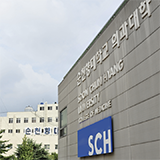
순천향대학교, Soonchunhyang University
-
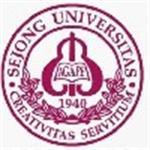
세종대학교,Sejong University
-
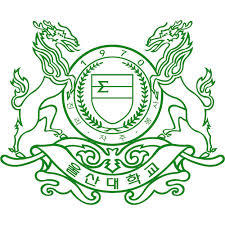
울산대학교,University of Ulsan
-
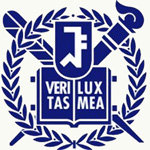
Seoul National University, SNU, 서울대학교
-
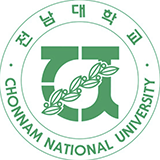
Chonnam National University, 전남대학교
-
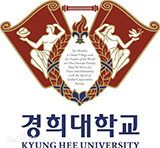
Kyung Hee University
-
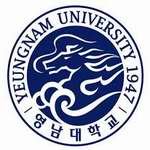
Yeungnam University, 영남대학교
-
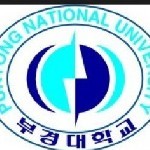
Pukyong National University, 국립부경대학교
-
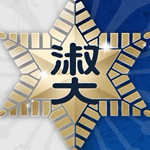
Sookmyung Women's University, 숙명여자대학교
-

Hallym University, 한림대학교
-

Mesoamerican University
-

Istmo University
-

Mariano Galvez University of Guatemala
-

Regional University of Guatemala
-

Galileo University
-

Francisco Marroquín University
-

Rafael Landívar University
-

University of the Valley of Guatemala
-

University of San Carlos of Guatemala
-

Technological Institute of Tlaxcala Plateau
-

Golfo University
-

Technological University of South Sonora
-

Technological University of Huejotzingo
-

Tizimín Institute of Technology
-

Chilpancingo Institute of Technology

